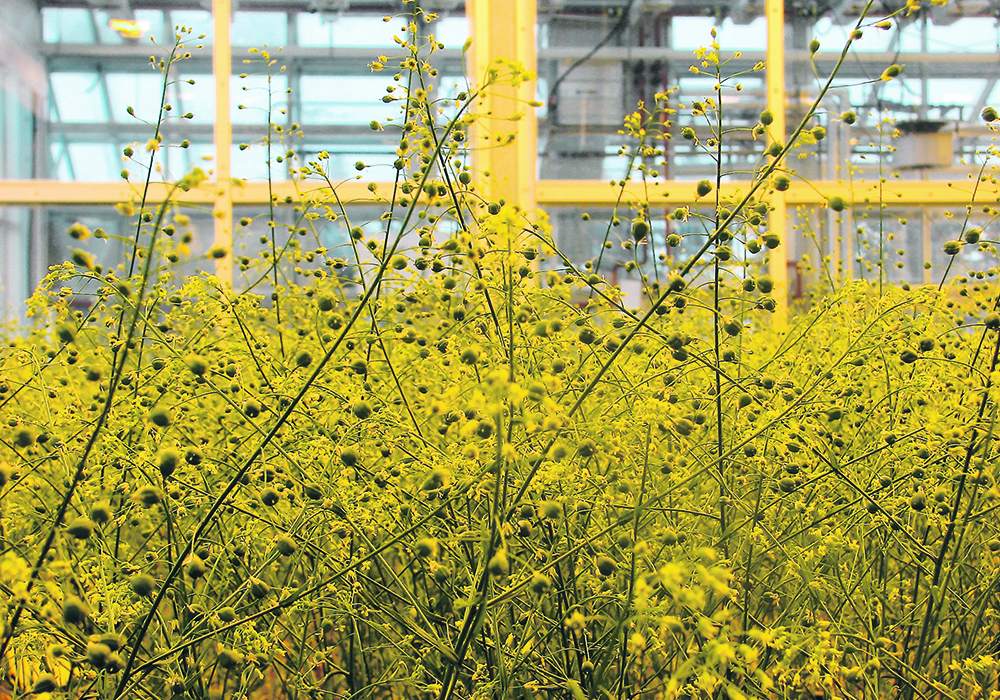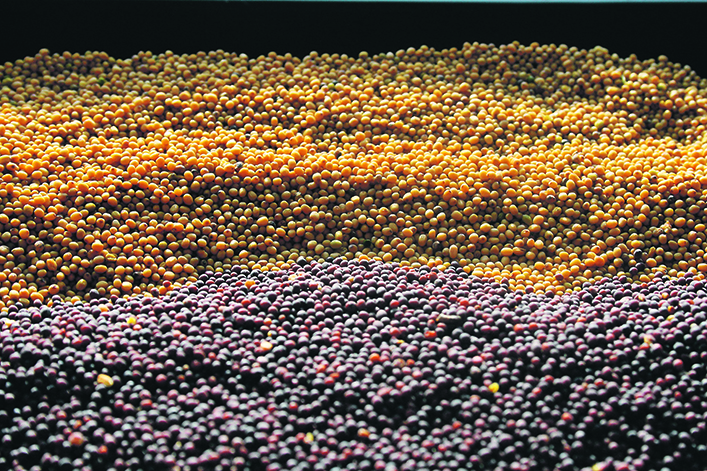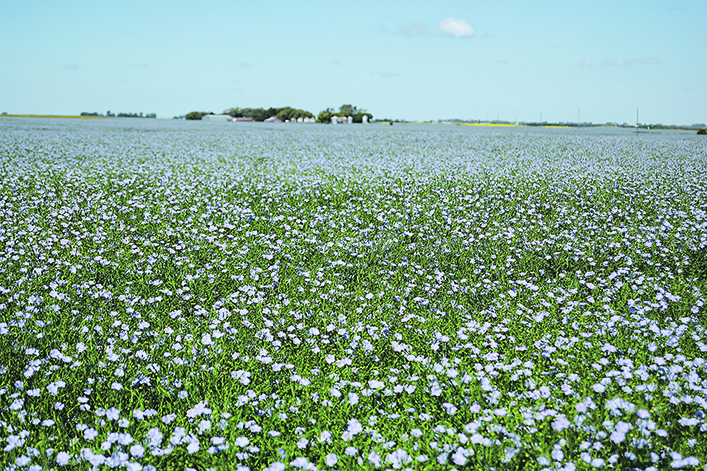At first glance, seven important specialty crops seem to have little in common, except a need for more research and development, and access to a bigger pot of money.
As Carol Ann Patterson explained, each crop — initially canaryseed, flax, mustard and sunflower — was limited in how much research funding it could get.
“With a project, the maximum amount of funding you could receive is $5 million dollars,” said Patterson, program manager for the Diverse Field Crops Cluster (DFCC).
“With a cluster, you could go up to $20 million in Agriculture and Agri-Food Canada money.”
This was the impetus behind the DFCC, which now includes the original four crops, plus quinoa, camelina, and hemp.
Led by Ag-West Bio in Saskatoon, the cluster secured $13 million from the Canadian Agricultural Partnership’s AgriScience Program in 2019, matched with $11 million from producer groups and industry partners.
It turns out the seven crops do have areas in common, and DFCC’s 16 research projects are organized under four themes: variety development, herbicide tolerance, agronomic practices, and value added. The emphasis is putting research results into the field as quickly as possible, which means pairing researchers with industry partners.
Agriculture Canada is a major player, along with provincial agencies such as InnoTech Alberta and the Manitoba Food Development Centre, which are also contributing their research muscle.
“When you look at our 16 research projects, 11 of our 16 projects have an Ag Canada collaboration,” Patterson said. “They’re working with an industry collaborator and the reason is, the collaborator is able to take things to market, is able to commercialize it.”
New varieties are one obvious route to the field, with increased yield, disease resistance, agronomy and market qualities topping the list. For example, quinoa cultivars that better suit Canadian conditions are now in field trials, and a herbicide-resistant camelina is in the works. The oilseed, which can withstand frost down to -10 C, is also being explored for its potential as a fall-seeded crop intended to overwinter on the Prairies.
Sunflowers are being developed with longer seeds with “broader shoulders” to better suit the confectionary market.
“It’s more like a teardrop shape,” Patterson said. “They’re getting close to being able to get it to market. They’re hoping to have a variety either registered or close to registered by 2023.”
DFCC has a national mandate aimed at developing varieties that can thrive “right from the Peace River country to the Atlantic provinces.” It’s also looking at hemp as a protein source for livestock feed.
On the agronomics side, DFCC projects are developing the knowledge producer need to decide if and where these specialty crops fit in their rotations and for what reasons. These can include disease control, as well as carbon and nitrogen management and improved soil health.
A priority for flax and hemp is coming up with strategies to manage cadmium. The toxic heavy metal is common in prairie soils and it can accumulate in the crop.
“You want to ensure that when you sell the crop into international markets that the heavy metal content in those end products doesn’t exceed what’s allowed,” Patterson said. She explained that while cadmium management practices may be established for large acreage crops, work remains for specialty crops.
While many DFCC projects focus on how to grow specialty crops, some are devoted to adding value to them once they’re in the bin. This is the case with canaryseed, or specifically, hairless varieties developed by plant breeder Pierre Hucl at the University of Saskatchewan Crop Development Centre.
Canaryseed received approval for human consumption in 2016 in Canada and the United States. The problem is food manufacturers don’t know how to use it.
“When you sell an ingredient to the food market, the industry wants specification sheets. They want to know its nutritional or chemical composition, they want to know what its functionality is,” Patterson said.
One DFCC project with the Manitoba Food Development Centre is working on canaryseed to answer these questions, as well other crucial ones: how to I use it, and how does it taste?
“This project is looking at making it into a flour and then putting it into different products and it’s going through some sensory evaluation,” Patterson said, explaining the goal is to create a “sensory lexicon” to describe a product that the food industry has not seen before.
“The goal of this project is to develop that lexicon that a producer or an ingredient manufacturer can take to food shows and say, ‘This is what it tastes like. This is how it can be described.’”
Now about halfway through its initial $24 million, five-year mandate, DFCC has created articles on progress to date on each of its 16 funded projects. These are available at dfcc.ca and agwest.sk.ca.






















